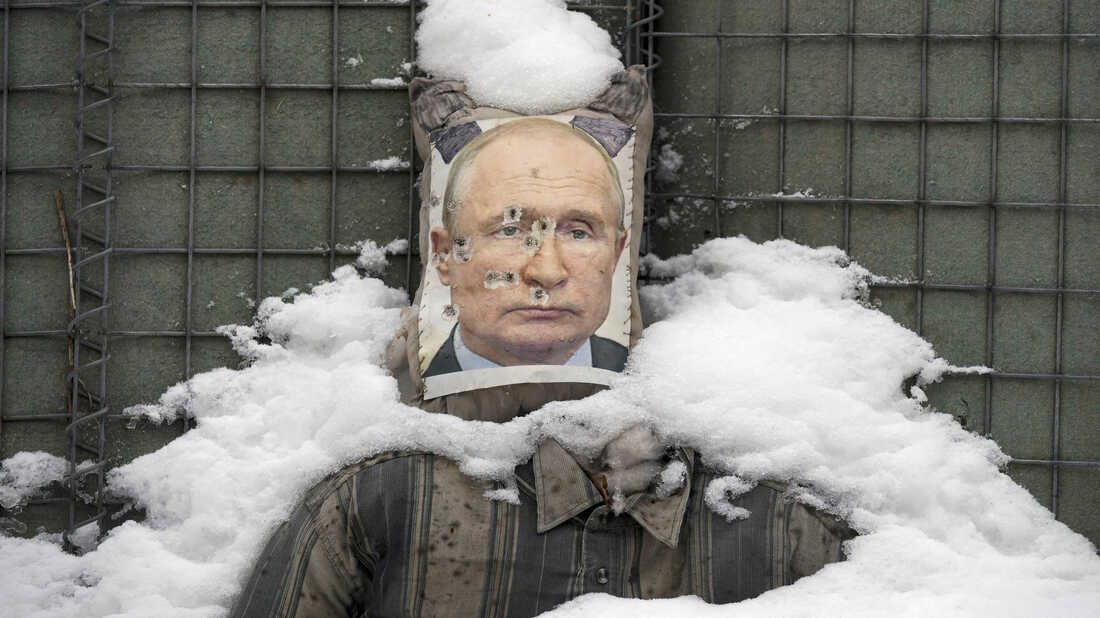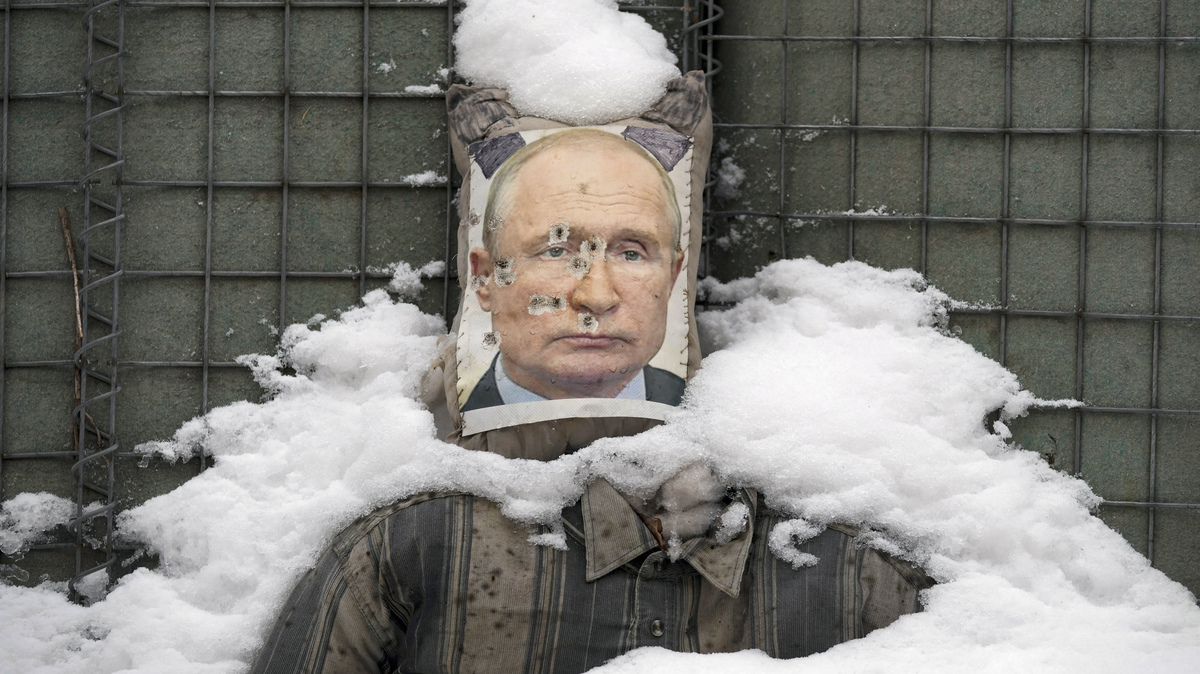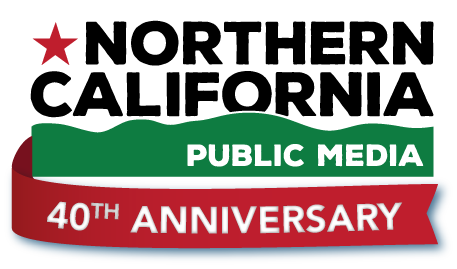
A bullet riddled effigy of Russian President Vladimir Putin, is coated by fresh snow at a frontline position in the Luhansk region, eastern Ukraine, Tuesday, Feb. 1, 2022. Vadim Ghirda/AP hide caption

A bullet riddled effigy of Russian President Vladimir Putin, is coated by fresh snow at a frontline position in the Luhansk region, eastern Ukraine, Tuesday, Feb. 1, 2022.
Vadim Ghirda/APThe world is watching as Russia continues it's threat of invasion with troops at the border of Ukraine. But close to that border, in the Donbas region, people look at you a little funny if you ask whether they're worried about war with Russia, because they are already living through it.
Areas of Eastern Ukraine have been at war since 2014 when Russia-backed separatists moved in and declared breakaway republics. And that's where NPR's Mary Louise Kelly has been, talking with residents about what this new threat might mean for them.
Email us at
This episode was produced by Jonaki Mehta, Kat Lonsdorf and Lee Hale. It was edited by Courtney Dorning and Fatma Tanis with help from Mark Katkov. Our executive producer is Cara Tallo.

 Live Radio
Live Radio